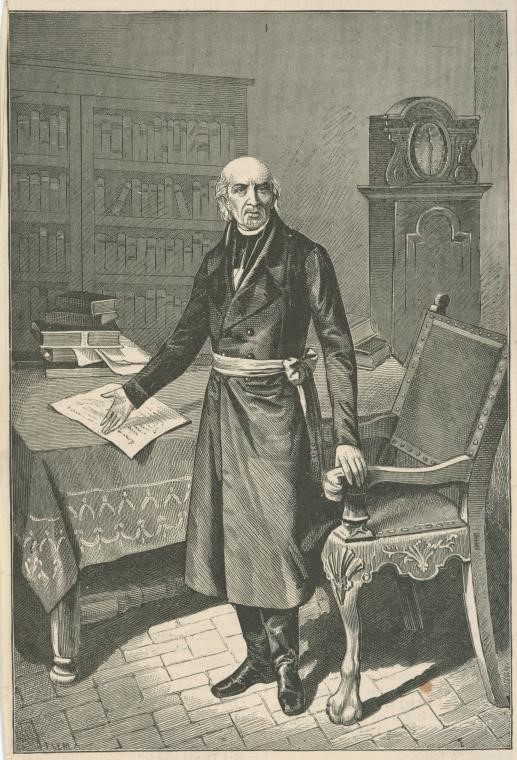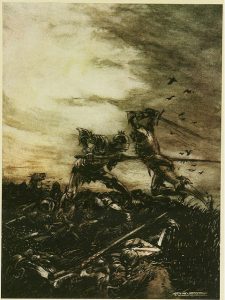Every 16th of September, there is a great celebration that occurs in Mexico. It is the celebration of independence, also known as “El Grito de Dolores” or “Cry of Dolores.” At twelve in the morning, yells of thousands can be heard throughout Mexico, expressing their love for the country and made in memory of the yell made by Miguel Hidalgo y Costilla to alert the church that the fight for Mexican independence had begun. Although well known, some people may not know of the work and sacrifice that went into gaining Mexico’s independence from Spain. Most notably, this revolution was due to an individual named Miguel Hidalgo. He was a Mexican priest, and history has recorded his meaningful involvement in Mexico’s fight for independence.1
During the time when the French Emperor Napoleon invaded Spain, the desire for independence and freedom was peaked in Mexico. But long before that, around the year 1773, there was a man by the name of Miguel Hidalgo y Costilla who obtained his bachelor’s degree from San Nicolás College and who became ordained a priest in 1778.2 As time past by, Hidalgo noticed how the Spanish would oppress the Mexican people, ultimately leading him to take a role that would impact Mexico’s future forever. Due to his charisma and outstanding personality, he was able to influence the Mexican lower classes to rise.

Miguel Hidalgo’s major involvement in the Mexican revolution was to motivate the lower class to rise up against the Spanish rule. Along with the help of Ignacio Allende and other revolutionaries, Hidalgo planned to revolt. However, early in September 1810, the revolutionary plan was exposed to the Spanish, along with who the revolutionaries were. Hidalgo had to think quick in order to find a way to inform the people that the revolution needed to begin earlier than when they had planned.3 They rang the church bells, and Hidalgo then gathered Mexicans together to hear him speak. He spoke about the consequences of being subjects of Spain, and to give a final push, he made the image of The Virgin of Guadalupe his banner for revolution. Most Mexicans were from the Catholic faith, so they viewed this revolution as a religious responsibility.
As time passed by, Hidalgo fought a number of battles against the Spanish, some with better outcomes than others. When the Spanish forces were reinforced, he headed north, which ultimately led to the Battle at Calderón Bridge.4 The battle ended terribly. The Spanish captured Hidalgo and his companions. He and the rest were taken to Chihuahua, Mexico, where they were put on trial. Miguel Hidalgo was found guilty, then shot and decapitated on July 30, 1811. Though Miguel Hidalgo was not around to see it, his death motivated Mexican troops to continue his cause of revolution. His actions had been necessary in order for the people of Mexico to come together and fight to gain its independence by 1821.


Today, the impact of Miguel Hidalgo is remembered every year with ” El Grito de Dolores,” often also referred to as ” El Grito de Independencia,” which translates to ” the cry of Dolores” and ” the cry of independence,” which is in remembrance of the day when Miguel rang the bells of his church and proclaimed the Mexican fight for independence. There is no doubt that Miguel Hidalgo will go down in history not just because he gave up his life fighting for revolution, but because he had the courage to fight when no one else did. He was able to gather a Mexican army to fight back and little did he know that his actions would be a pivot point in order to achieve Mexican independence. There are multiple statues of him throughout Mexico, but the most notable one is in San Miguel de Allende, Mexico. People walk past the statue every day and remember the great sacrifice that was made in order to have the Mexico that is established today.
- Christon I. Archer, Miguel Hidalgo y Costilla (1753–1811) (Detroit: Charles Scribner’s Sons, 2008), 687-689. ↵
- E. Del Hoyo, Miguel Hidalgo y Costilla (Detroit: La Vida del héroe, 2003), 820-821. ↵
- Marvin Alisky, Miguel Hidalgo Y Costilla (Scarecrow Press, 2007), 259-260. ↵
- Wil G. Pansters, Mexico (New York, Macmillan Reference USA, 2001,), 1447-1464. ↵



32 comments
Annissa Noblejas
Miguel Hidalgo knew the importance of uniting the lower classes against injustice and oppression. With so many voices it becomes impossible not to hear the outcry for independence. Hidalgo had the strength and courage to reinforce his beliefs with actions and inspired thousands of others to do the same. He ultimately gave his life for Mexico’s independence and is remembered as a hero.
Francisco Cruzado
I liked the overview this article gives on Miguel Hidalgo, it really summarizes the spirit of his image: that of heroism and tragedy. As with Medrano in Argentina, or Toussant in Haiti, Hidalgo really catches that spark which is enough to initiate a popular uprising. As like San Martin in Peru, or Francisco de Miranda, he is more of a symbol, I think: instead of the political genius of Bolivar, or the magnific governing abilites of Artigas, Hidalgo is maybe closer to what this article said: a cry for independence. I really enjoyed reading it through!
Jose Chaman
Really interesting story. I have never read about Miguel Hidalgo until now, and I am really grateful that I did. Miguel Hidalgo made a great action helping his country to get free from the Spaniards. His initiative had a great impact in the history of Mexico, and his murderer will always hurt in the heart of the Mexican people. A hero that served the Lord and his country as best as he could. Great article.
Juan Arceo
Viva Mexico!!! I am proud to be of Mexican descent as overall, our history is so amazing. Mexico has such a wide variety of qualities that just makes this land so beautiful. From the food, to the land, to La Virgen de Guadalupe, everything is amazing and most of this wouldn’t be able to be here if it wouldn’t be for the infamous grito of Don Miguel Hidalgo, who with his courage and determination was the frontrunner and the main person in achieving the independence of Mexico.
Thalia Romo
I haven’t learned much about Mexican history, but I really enjoyed this article because of how it goes into depth of the biggest achievement the country faced- independence. Miguel Hidalgo played a vital role in encouraging the lower income individuals into feeling a sense of power and independence from the Spaniards. The article does a great job at also showing the importance that the Virgin od Guadalupe plays as a symbol of freedom to Mexican citizens, especially throughout the Mexican Revolution.
Kasandra Ramirez Ferrer
As a Mexican, I’m proud to say that this is just another amazing holiday we have in Mexico to honor those who helped the country gain its freedom back. Before I moved, I would go every year to the center of the city and celebrate until midnight, when you can hear thousands of voices yelling “Viva Mexico, Viva”. I grew up reading in school about Mexico and Hidalgo’s history, it inspires me how people like Miguel Hidalgo moved crows for a cause and gain their independence. Still sad that Spain took over Mexico and corrupted it but I do imagine what an amazing country Mexico could have been, a country where technology advances would meet nature and the rich diversity Mexicans had.
Edith Santos Sevilla
The history of Mexico has to be one of my favorites for some reason, it is kind of entertaining and it shows a different perspective compared to the US. The Mexican Independence was supported by many Catholic followers including Miguel Hidalgo. The article describes the major points during September 16th for the Mexican Independence including the death of Dolores, who was killed because he was defending Mexico against the Spanish. In 1811 during the death of this important figure it can be said to be a turning point for Mexican history.
Yazmin Garza
In the town where I grew up, we had a Mexican independence parade every year on the Sunday before September 16th, and it was always one of my favorite days of the year, and now that I know a little bit more about the history of the day, I think I’ll appreciate the day and celebration even more. The Mexican people were definitely the underdogs in their battle for independence, and I’m so glad that they were able to overcome that obstacle and win the war, even if Miguel Hidalgo y Costilla wasn’t there to witness it.
Diego Terrazas
Miguel Hidalgo can be seen as the spark of hope for Mexico to become independent. He was the one who brought together all the Mexicans in order to revolt against Spain’s rule. Ultimately, his death was not in vain because the Mexican revolt grew in power. Hidlago is definitely the one who set the ball rolling for Mexico’s independence which ultimately succeeded against the odds.
Priscilla Reyes
I believe Miguel Hidalgo deserves the title of Father of Mexican Independence because as the article states, he was a strong advocate and leader. He was very prepared, given he attended a university. He was liked by many and appealed to their religious identity. Through historical patterns we observe change only occurs when the people are brave enough to stand up against the lead power and when they unite. In this case, Miguel Hidalgo persuaded based on the struggles of maintaining with the governance of Spain.